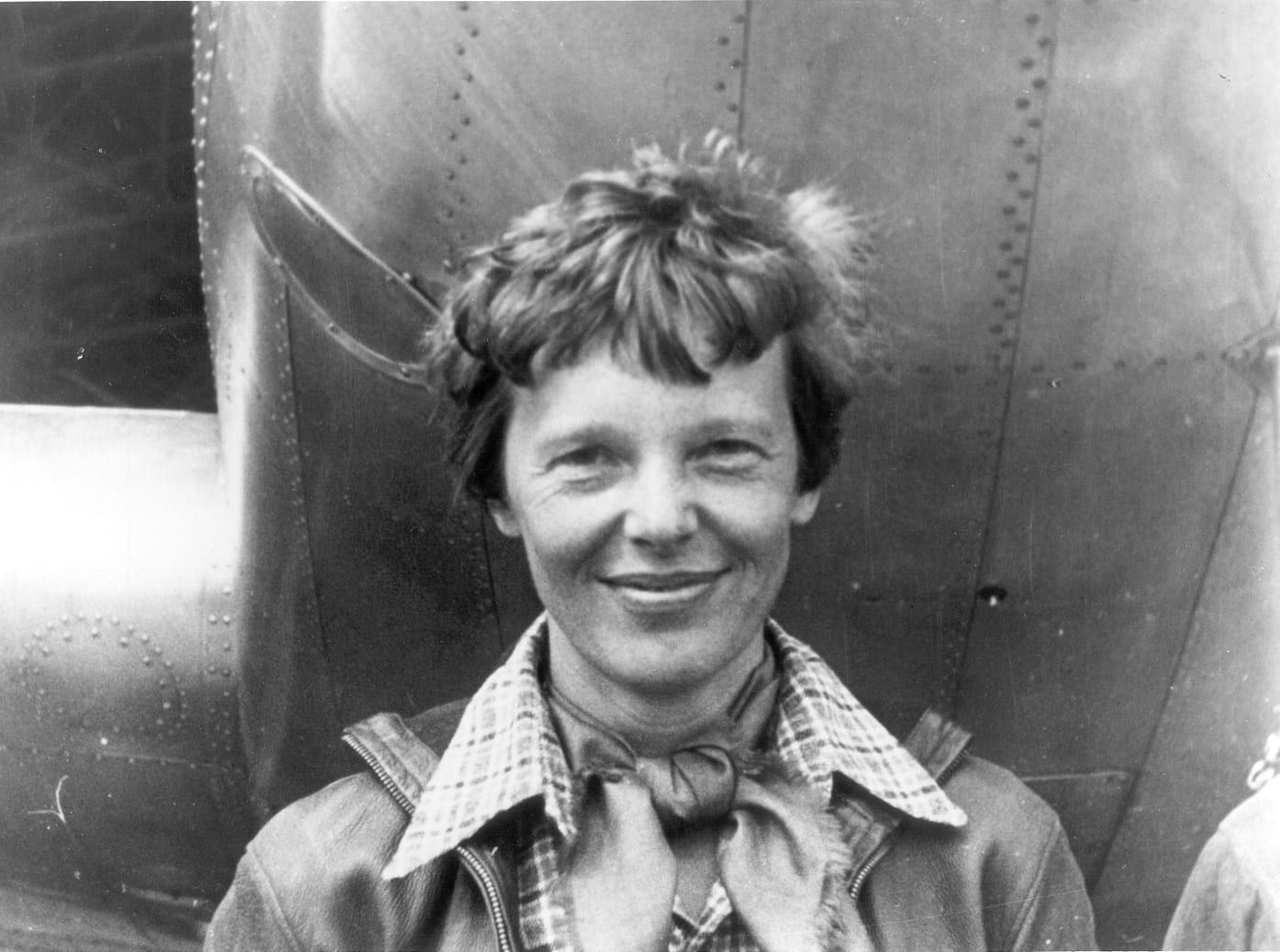37 Ultimate Facts About The 1920s
What do you know about the 1920s? You’re probably familiar with the nicknames ‘Roaring 20s’ and ‘Jazz Age’. The term Jazz Age was popularized by Francis Scott Key Fitzgerald, who was best known for his novels portraying the flashiness and sensibility of the 1920s.
But did you know that Agatha Christie’s mega-famous creation Hercule Poirot was born in 1920? Let’s put Hercule Poirot’s methods into good use by establishing order and method and engaging our little gray cells to solve the mysteries of this decade through these fun facts about the 1920s…
1. The 1920s gave birth to the era of Prohibition in the US.
Prohibition went into effect about a hundred years ago, which led to the rise of speakeasies strongly impacting American culture and society.
Specifically, this measure went into effect in the US via the 18th Amendment to the Constitution. This was a period during which you could still drink alcohol, but it was against the law to make, transport, and sell it. Prohibition ran until late 1933.
2. A number of life-changing inventions debuted in the 1920s.
In the past 100 years, our lives have changed drastically, and life in the 1920s was pretty different compared to today. In the 1920s there were many extraordinary artistic, cultural, and technological advancements.
For example, in terms of inventions, this was a decade that brought us the television, the instant camera, and even penicillin. Alexander Fleming, the celebrated chemist, discovered the last of these completely by accident in a petri dish!
3. Ford continued to make automobiles accessible to all.
Sold until 1927, the Model T vehicle by the Ford Motor Company pretty much defined the 1920s.
The affordable car helped rural Americans connect to other parts of the country. This led to the creation of the numbered highway system throughout the US still known today.
The Model T famously turned around the idea that cars were luxury commodities for only the very wealthy – this car was relatively affordable and soon seen taking up the highways.
4. The 1920s was the decade of the flapper, luxe design, and Art Deco.
In the world of fashion, luxe fabrics, flapper girl silhouettes, and Art Deco dominated the 1920s.
Fashion was characterized by loose fabrics, fringe, and glamorous details. The garments differed immensely from the street style-inspired looks that are popular today.
That said, Art Deco is a style that’s never really gone out of vogue in architecture. Keep reading for some more information on this straight-lined visual style!
5. There’s a chance we’ll see these fashions again.
According to fashion historians, because trends are cyclical, it is very likely that ’20s-inspired clothing will make a comeback again.
In fact, you can see fashions inspired by the era making a comeback on social media already. Take a look at #1920fashion on Instagram for the latest looks from a century ago!
6. Speakeasies became the norm in the US.
Under Prohibition, effective from 1920 and through to 1933, the USA banned alcohol manufacture, sale, and transportation. This law gave way and “inspired” organized crime and speakeasies, which were secret bars where people could drink in private.
The ban on alcohol was notoriously difficult to enforce – which is why speakeasies became so popular, and why “organized criminals” and gangsters like the infamous Al Capone came to prominence in the criminal underworld.
7. Without Prohibition, jazz might not have thrived.
The Jazz Age was indirectly powered by the Prohibition of alcohol. In Chicago, the jazz scene was developing quite fast, especially with the immigration of over 40 famous New Orleans jazzmen to the city.
Jazz certainly predated the ban on alcohol by some years – but thanks to Prohibition, a new type of nightlife was evolving underground – and the soundtrack was jazz.
8. The 20s saw the rise of a notorious gangster.
Al Capone was perhaps one of the most infamous men making money on the back of the prohibition era. He fought viciously to keep control of Chicago, Illinois – and thanks to Prohibition being tough to police, he slipped through the cops’ net many, many times.
Capone would eventually face arrest and prison for carrying concealed weapons in 1929 – but he was back on the street in 1930, having been a model prisoner.
9. The 1920s saw Suffragettes take to the streets to demand equal rights for women.
Until 1920, suffragettes – members of an activist women’s organization – rallied for women’s voting rights in America.
With the 19th Amendment, women were granted the right to vote on August 18th, 1920. Regrettably, the decision came after several decades of fighting for equality – meaning many people who had started the movement likely didn’t get to see their efforts pay off.
While this Amendment was a big step in the right direction, many non-white women continued to face voting restrictions due to federal and state laws across the country for much of the 20th century.

The Mayflower club, a speakeasy in D.C. serving liquor and a place for gambling
10. You didn’t have to go to a pharmacy to get your pills.
In the US in the 1920s, prescriptions could be picked up not only in drugstores but also at soda and candy counters.
Drugstores were also considered as central gathering spots in the community.
Customers could sit at the counter of a pharmacy and enjoy a root beer float or an egg cream in the 1920s-era pharmacy. These pharmacies were decorated with marble countertops and beautiful light fixtures.
11. The 20s saw the rise of cinema!
As the popularity of ‘moving pictures’ matured in the early 1920s, movie ‘palaces’ capable of seating thousands were launched in major cities across the US.
A ticket for a double feature and a live show cost 25 cents, enabling Americans to escape from their problems and lose themselves in the magic of film.
Some of the biggest-selling movies of the decade included “The Covered Wagon,” “The Big Parade,” and “The Singing Fool.”
12. It’s likely more people went to the pictures more in the 1920s than today.
At the height of their novelty in the 1920s, movies were attended far more than today. People were often going more than once per week.
By the end of the decade, weekly movie attendance increased to 90 million people. Take a look at the box office totals for the biggest movies – “The Jazz Singer,” for example, accrued $7.6 million. That’s an impressive $123.4 million in today’s money (at the time of writing)!
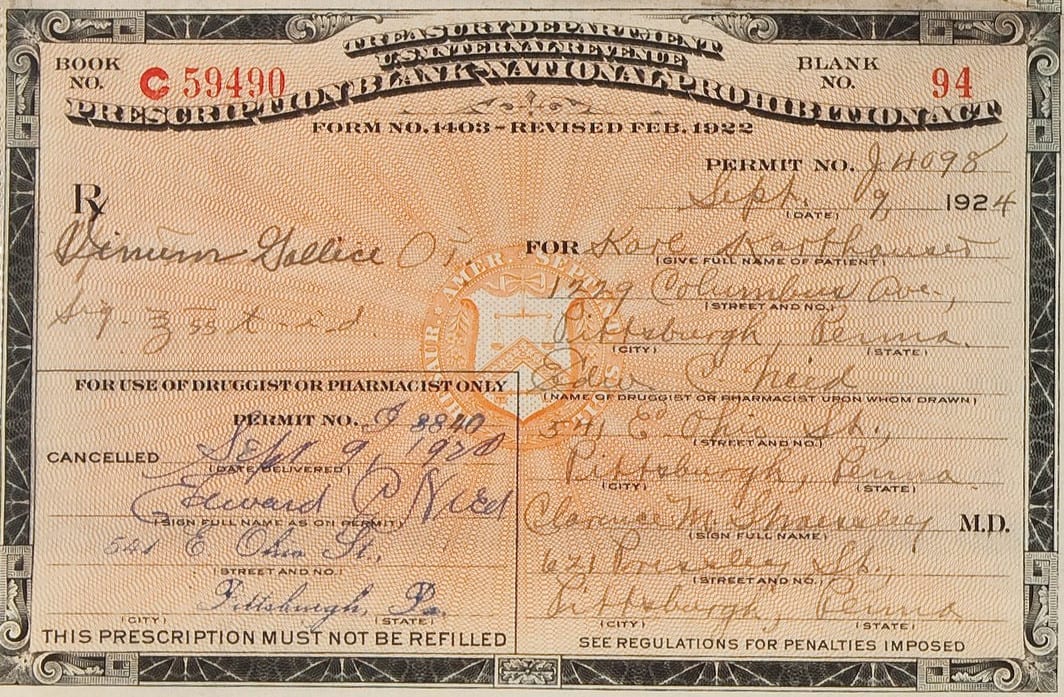
A sample prescription from the 1920s
13. Silent movies created household names out of unlikely stars.
The rise of the first generation of movie stars happened with the silent movies of the early 1920s.
Charlie Chaplin – perhaps the most iconic star of his era – captured the attention of the American viewing public more than any other star. Chaplin was the top box office attraction of his time known for his sad-eyes mustache, baggy pants, and his cane.
Chaplin, oddly enough, never received a Best Actor Oscar – but he was nominated many times, received two honorary awards, and was recognized for a Best Score.
14. However, the silent movie would become old news by 1927.
The world of the silent movie began to fade away with the New York release of the first “talkie,” or movie with sound, “The Jazz Singer” in 1927.
The movie starred musical star Al Jolson, and was remade multiple times with varying success!
15. The power of the middle class surged in the 1920s.
One important factor that made the 20s roar was the enlarged economic power of the middle class.
The automobile, film, radio, and chemical industries hit never-before-seen levels of success due to mass production allowing greater supply for a greater demand.
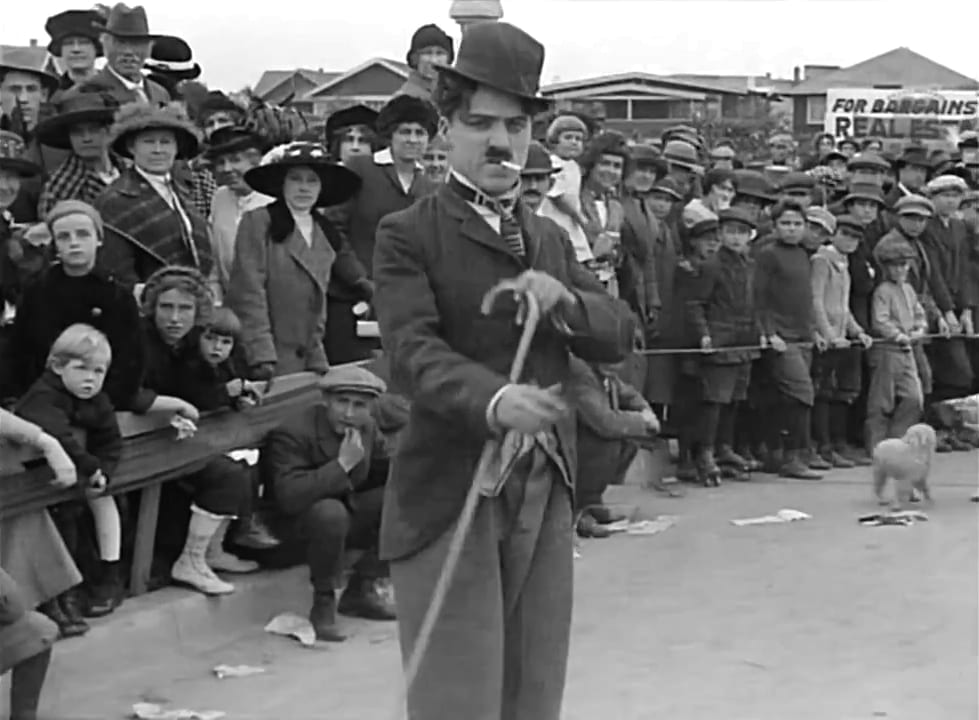
Charlie Chaplin in ‘The Tramp’
16. The motoring revolution took place overnight.
The 1920s oversaw a massive construction of roads, highways, and bridges to give motorists more places to drive and accommodate all the new cars.
Consider the roads built in 1922, for example – it’s thought over 16,500km of new paving was greenlit during the period, at a rate of $189 million. That’s triple the road coverage from just six years prior!
17. Babe Ruth made baseball a household sport in the 1920s.
Baseball legend Babe Ruth, also known as the Bambino, was the most famous athlete of the 1920s. Ruth’s high-profile lifestyle pulled so much more attention to himself, beginning a dynasty for the New York Yankees.
Ruth would break multiple records – including the number of home runs scored in a single season. He broke his own record in the 1920s, specifically in 1920 and 1921!
18. Charles Lindbergh broke a record for solo flight in 1927.
The American aviator Charles Lindbergh became the first pilot to achieve a non-stop, solo flight across the Atlantic Ocean flying for 33.5 hours in a single-engine airplane called the “Spirit of St. Louis.”
In 1927, he was awarded the French Legion of Honor and the Distinguished Flying Cross for this great achievement.
Lindbergh’s name would hit headlines for other reasons come 1932, however, when his infant son was kidnapped!
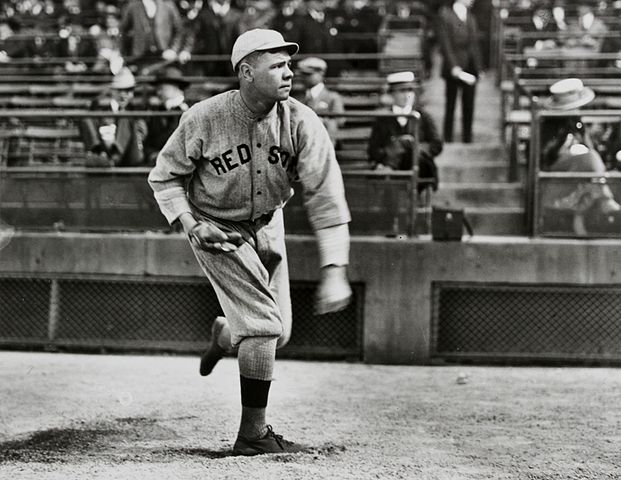
19. Medical breakthroughs were enormous in the 20s.
As mentioned earlier, Scottish scientist Alexander Fleming discovered penicillin in 1928. Penicillin is still used around the world today to save thousands of lives from lethal infections.
That’s not all – by the end of the 20s, we had new antitoxin medicines rolling out for diseases such as measles and scarlet fever. Measles, in particular, is still problematic for children nowadays – but we know how to treat it!
20. The 1920s is a decade with many different nicknames.
The 1920s were known in some western countries, particularly England and the US, as the “roaring 20s.”
In France, this translated as “annees folles,” meaning “the crazy years!” This reflects, of course, people cutting loose after a decade of war and toil – fashion, entertainment, and societal norms were evolving fast.
21. Art Deco dominated fashion, art, and architecture – and it’s still around today!
Art Deco was a new style of movement for art, architecture, and fashion that arose in the 1920s. This represented one of the first “modernist” movements.
The 1920s saw a huge shift in terms of architectural design as ornate flourishes became less and less common. Art Deco was ‘classic simplicity’ and focused on more angular designs!
This transferred to buildings, jewelry, furnishings, and pottery.
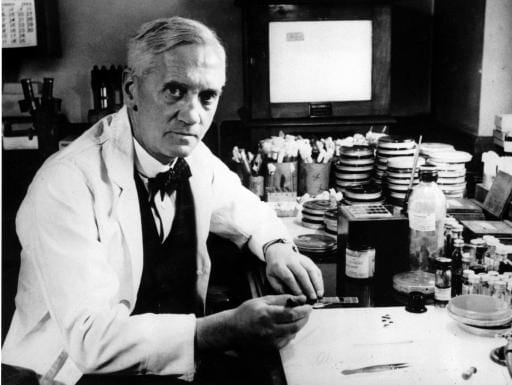
Alexander Fleming, founder of penicillin
22. High fashion and high art blended well – and we have Coco Chanel to thank for much of it.
Coco Chanel was one of the most famous fashion designers of the age. She was influenced by the Art Deco movement, and her perfume bottles are still designed with the same angular styles to this day.
Chanel is celebrated for her work in revolutionizing women’s fashion in the 1920s. Specifically, as well as producing incredible new looks, she helped to make female fashion more free-flowing and comfortable.
23. The jazz of the 1920s signified freedom from war.
We’ve covered jazz briefly in this fact file already – but this really was the Jazz Age! The upbeat music of the time helped to reflect the exciting, post-war mood – and, as discussed, the rise of the underground speakeasy culture really helped it along.
Big jazz stars of the 1920s include Louis Armstrong, aka Satchmo, Duke Ellington, Bix Beiderbecke, and Jelly Roll Morton.
24. Satchmo recorded for the first time in 1923.
Louis Armstrong, of the artists mentioned above, is easily one of the most recognizable and enduring names in jazz. He’s probably the most famous jazz singer and trumpeter of all time.
Satchmo, however, wouldn’t make his recording debut until three years into the 20s! He recorded with his band in 1923, and the rest is jazzy history.
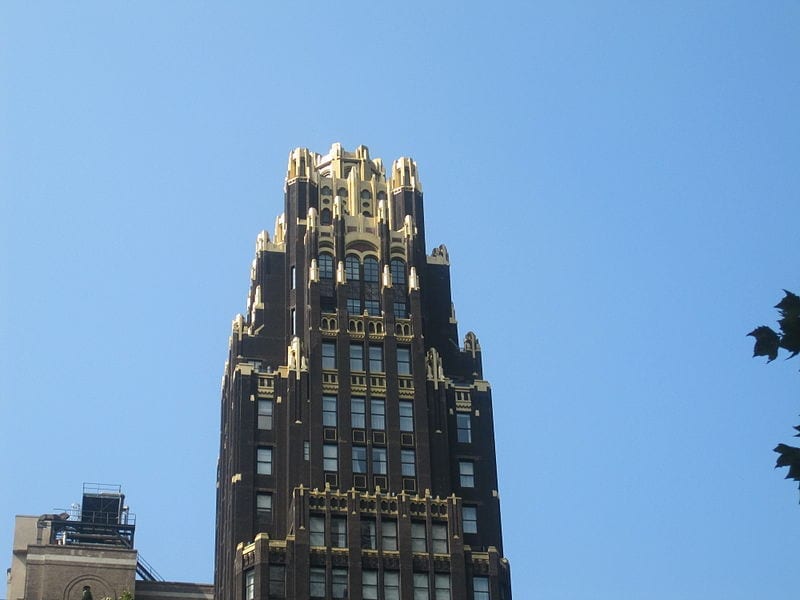
Bryant Park Hotel in NYC exhibiting an art deco style of architecture
25. A massacre on St. Valentine’s Day brought a low point to the decade.
The “St. Valentine’s Day Massacre” of 1929 was a particularly bloody event that saw seven people killed as a result of gang rivalry and police intervention.
Specifically, the murders occurred within the North Side Gang in Chicago, Illinois. It’s thought the men who were killed were lined up and murdered by at least two men dressed as police officers. The murderers were never found.
26. Motor racing started gaining momentum in the 1920s.
The 1920s was a fantastic decade for motorsport! In 1925 and for five successive years, Bugatti won the Monaco Grand Prix, each time with the world-famous Bugatti Type 35.
Cars taking part in motor races were becoming more impressive, too. While people were still getting accustomed to the Model T on the roads, in the speedways, supercharged cars were starting to claim podiums and championships. In fact, the 1923 Italian Grand Prix was the first of its kind to be won by a “supercharged” vehicle.
27. Rolls Royce cars catered to the luxury end of the motoring market.
Just as Ford started to appeal to the mass market of automobile buyers, Rolls Royce aimed to fill the luxury gap.
2,940 Rolls Royce cars were manufactured and sold between 1922 and 1929. These cars were aimed at a market of ‘owner drivers’ instead of the bigger and more expensive chauffeur-driven models.
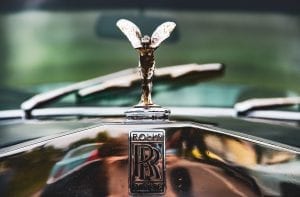
The Spirit of Ecstasy, Rolls Royce
28. However, drivers preferred something a bit more affordable.
Unsurprisingly, the most popular car on sale in America in the 1920s was the Model T Ford. In the 1920s, a Model T Ford cost just $850! Today, that would equate to $18,000.
The Model T was such a roaring success, it inspired owner Henry Ford to comment: “There’s no use trying to pass a Ford because there’s always another one just ahead.”
Ford’s operations had expanded immensely by 1927 – and, oddly enough, the company stopped production of the Model T. They replaced it with the Model A – which was nowhere near as popular!
29. Many big names were born in the 1920s.
Famous people born in the 1920s include Queen Elizabeth II (1926), Marvel Comics titan Stan Lee (1922 – 2018), politician Daniel Walker (1922 – 2015), ‘Charlie Brown and Snoopy’ creator Charles M Schulz (1922 – 2000), and Pope John Paul II (1920 – 2005).
Another famous name born in the 1920s was Thomas Moore, known to many as ‘Captain Tom’. Moore became famous during the 2020 pandemic for raising millions for charity through a sponsored walk in his garden.
30. Deadly earthquakes and floods shook the world across the 1920s.
The second-deadliest earthquake of the 20th century took place in 1920. 275,000 lives were lost in the Haiyan Earthquake.
On May 29th, 1920, in Louth, England, a huge flood took 23 lives within 20 minutes. It was described as one of the worst disasters in Britain of the 20th century.
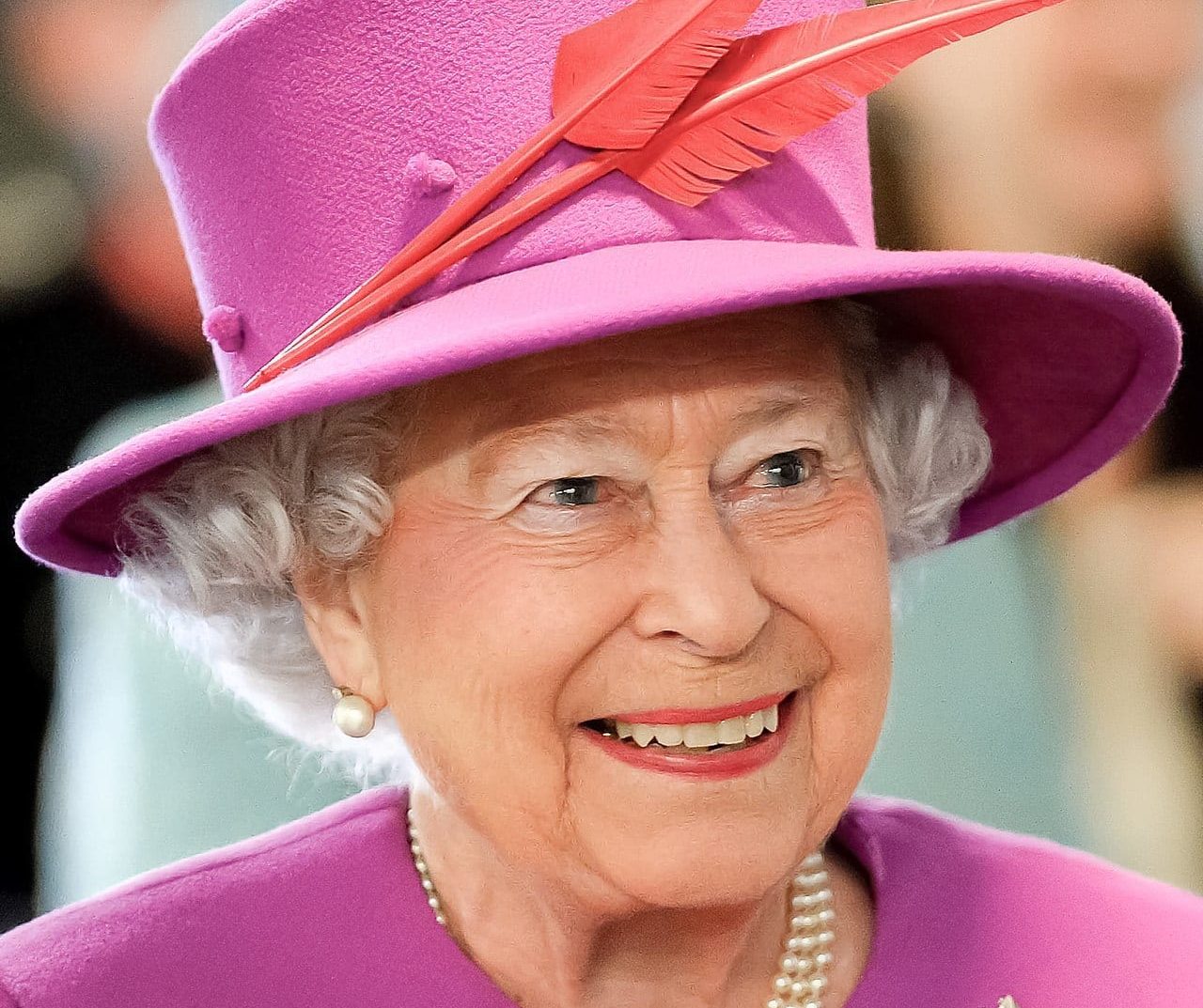
31. Space exploration began in the 1920s with several societies and rockets launching.
The Society for the Exploration of Interplanetary Travel was founded in 1924 – and, in the same year, the first fuel-powered rocket was launched in the US.
In Germany, during 1927, the Society for Space Travel was formed. Several scientists from other countries joined the society to learn and work together.
Interestingly, NASA wouldn’t be formed until July 1958 – meaning these groups were ahead of their time!
32. We even crossed the Sahara for the first time in the 1920s.
On February 18th, 1920, the first recorded crossing of the Sahara Desert was completed by a French Military aircraft.
Interestingly, we even managed to cross it by a motor vehicle just four years later! In 1924, a Citroen-led expedition took a motorized track vehicle across Africa, north to south – Sahara included.
33. Rudolf Schroeder set a new world record for altitude.
Schroeder, a US Major, set a record for flying at high altitudes, reaching 33,133 feet. His oxygen system broke down, and he lost consciousness, recovering just in time to land!
For all the aerospace geeks out there – he was reportedly piloting a Packard-Le Peré LUSAC-11 fighter.

34. Australia took to the skies at the start of the decade.
In November 1920, Qantas, the Australian Airline, was founded. It’s actually the third-oldest public airline as a result, and by 1947, the company was scheduling flights between England and Australia, setting international flight records.
In fact, to this day, Qantas still runs the longest commercial flight in the world – the “Kangaroo Route,” a journey of 17,800 km that takes passengers from Perth, Australia, all the way to London, England.
35. Amelia Earhart broke lots of flight records of her own in the 1920s.
In December 1920, Amelia Earhart’s father bought her a $10 ticket for a 10-minute flight. This would be her first experience in an airplane – at a fairground in LA.
Just two years later, in 1922, Earhart was the first female pilot to fly solo above 14,000 feet.
Tragically, Earhart went missing on a transcontinental flight in 1937 with her navigator, Fred Noonan. They were never discovered.
36. The 1920s was a decade full of creative dancing.
The “Jitterbug” was the name given to what many consider the most famous dance of the 1920s. Its original name was the “Lindy Hop” and it remained popular into the 1950s.
The “Charleston” was a hugely popular piece of music named after its composer, Charles Johnston. The Charleston dance followed the upbeat rhythm of the music and became iconic in the West during this time.
37. We discovered insulin in the 20s.
Sir Frederick Banting, assisted by Charles Best, discovered insulin in 1922. Insulin is hugely important in helping people with diabetes to live healthy lives. They discovered the substance while experimenting on canine pancreases!
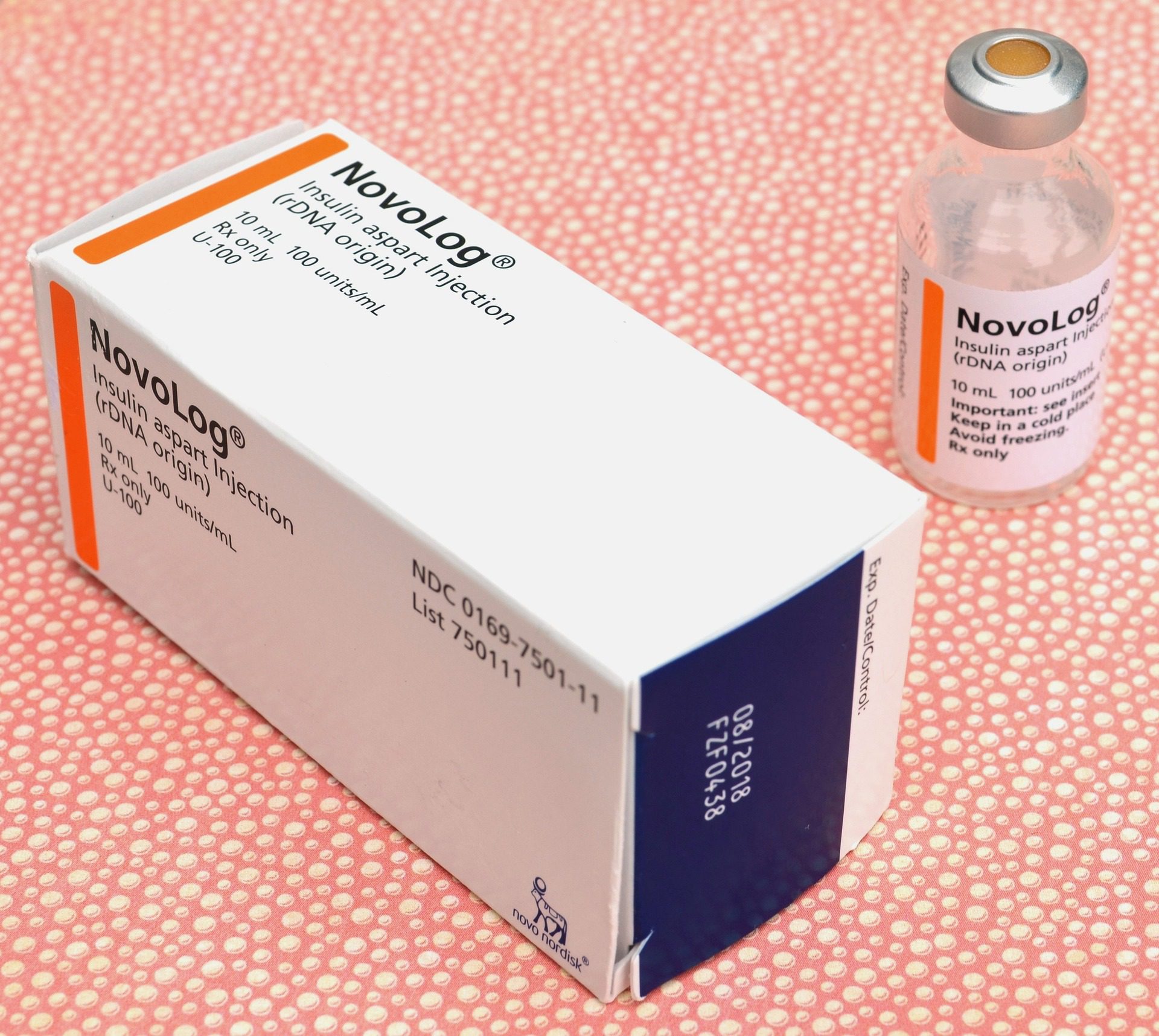
FAQs About the 1920s
What made the 1920s ‘roaring’?
This nickname was largely given to the decade as prosperity reigned - the global economy boomed post WWI.
What was the 1920s also known as?
The 1920s were also largely known to millions as the Jazz Age - the musical revolution was massive.
How did society change in the 1920s?
The 1920s saw a wide relaxation of attitudes regarding fashion and sexuality, as well as gender roles - women across the US got the right to vote, too!
Do you know any fun facts about the 1920s? Share them in the comments below!
This page was last modified on April 20, 2024. Suggest an edit


